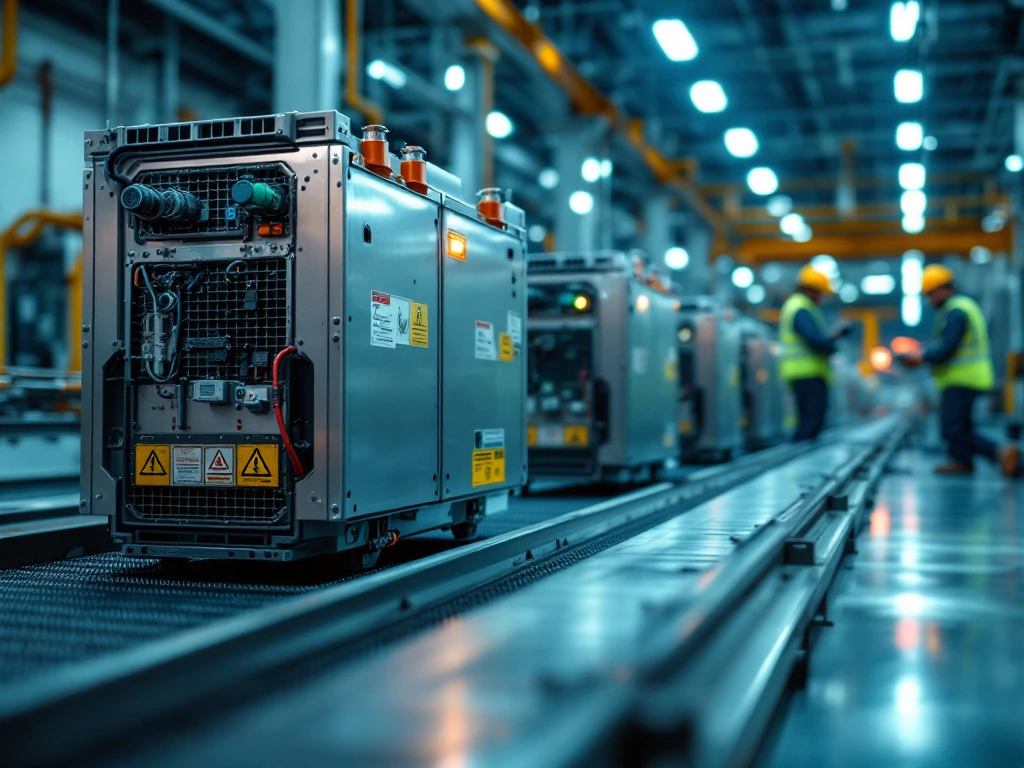Converting a classic car to electric power or building a custom EV sounds exciting until you face the battery selection process. Many first-time retrofitters dive in without understanding the complexities involved, leading to costly mistakes that could have been easily avoided. The battery pack is the heart of your EV retrofit project, and choosing the wrong one can turn your dream build into a nightmare of poor performance, safety issues, and unexpected expenses.
This guide walks you through the most common pitfalls that trip up EV retrofit enthusiasts and shows you exactly how to sidestep them. Whether you’re converting a vintage sports car or building a custom electric racer, these insights will save you time, money, and frustration.
1: Underestimating your power requirements
You’ve probably heard horror stories about EVs that can barely climb a hill or struggle to maintain highway speeds. This usually happens when builders underestimate their power needs during the planning phase. The problem isn’t just about having enough juice for normal driving – you need to account for peak power demands during acceleration, hill climbing, and overtaking.
Different vehicle types have vastly different power requirements. A lightweight sports car conversion might need 200-300 horsepower for thrilling performance, whilst a heavy commercial vehicle could require 400+ horsepower just to move efficiently. Don’t forget that electric power EV systems need extra capacity beyond your calculated minimums to handle unexpected demands and maintain battery longevity.
Start by calculating your vehicle’s weight, desired acceleration times, and maximum speed requirements. Factor in a 20-30% buffer above your calculated needs to ensure your battery pack can deliver consistent performance without being constantly stressed to its limits.
2: Ignoring weight distribution and vehicle balance
Throwing a heavy battery pack wherever it fits is a recipe for disaster. Poor weight distribution can make your converted vehicle handle like a shopping trolley with a wonky wheel. The battery pack’s placement affects everything from cornering ability to braking performance, and getting it wrong can create dangerous handling characteristics.
Traditional internal combustion engines sit over the front axle, but batteries offer more flexibility in placement. You can distribute weight more evenly by splitting battery modules between the front and rear of the vehicle, or create a low centre of gravity by mounting packs under the floor. The key is maintaining proper front-to-rear balance whilst keeping the centre of gravity as low as possible.
Consider how Formula E battery packs are designed with weight distribution in mind – they’re engineered to enhance vehicle dynamics rather than compromise them. Map out your vehicle’s original weight distribution and plan your battery placement to improve or maintain optimal balance.
3: Choosing the wrong battery chemistry for your application
Not all batteries are created equal, and choosing the wrong chemistry for your specific application can lead to poor performance, shortened lifespan, or safety issues. Lithium-ion might be the popular choice, but within that category, you’ll find numerous variants, each with distinct characteristics that make them suitable for different applications.
Lithium iron phosphate (LiFePO4) batteries offer excellent safety and longevity but have lower energy density. Lithium nickel manganese cobalt (NMC) batteries provide high energy density but require more sophisticated thermal management. For high-performance applications like e-racing battery systems, you might need lithium polymer cells that can handle extreme discharge rates.
Match your battery chemistry to your priorities. If you’re building a daily driver, prioritise safety and longevity. For a weekend track car, focus on power density and discharge rates. Racing applications might justify the complexity of advanced new battery technology for electric cars, whilst a classic car conversion might benefit from the simplicity of more established chemistries.
4: Overlooking thermal management requirements
Batteries generate heat during charging and discharging, and excessive heat is the enemy of battery performance and longevity. Many retrofit builders underestimate the importance of proper cooling systems, leading to reduced range, shortened battery life, and potential safety hazards.
Air cooling might seem simpler and cheaper, but it’s often inadequate for high-performance applications or hot climates. Liquid cooling systems are more complex but provide superior temperature control, especially important for high-discharge applications. The choice between cooling methods depends on your battery chemistry, power requirements, and operating environment.
Don’t assume that because your battery pack fits in the available space, it will stay cool enough to operate safely. Plan your thermal management strategy from the beginning, not as an afterthought. Consider ambient temperatures, charging speeds, and discharge rates when designing your cooling system.
5: Skipping proper battery management system integration
A battery management system (BMS) is your safety net, monitoring cell voltages, temperatures, and current flow to prevent dangerous conditions. Skipping proper BMS integration or choosing an incompatible system is like driving without brakes – it might work initially, but it’s only a matter of time before something goes wrong.
The BMS needs to communicate effectively with your motor controller, charger, and other vehicle systems. Compatibility issues can lead to charging problems, reduced performance, or safety shutdowns at inconvenient times. Different battery chemistries require different BMS parameters, and mismatched systems can fail to protect your expensive battery pack.
Invest in a quality BMS that’s designed for your specific battery chemistry and application. Ensure it can handle your maximum current requirements and integrates properly with your other systems. A good BMS will also provide valuable data about your battery’s health and performance over time.
6: Misjudging space constraints and packaging needs
Measuring the available space in your vehicle and assuming any battery pack that fits will work is a common mistake. You need to account for cooling systems, wiring, mounting hardware, and access for maintenance. What looks like plenty of space on paper often becomes cramped when you start installing real components.
Modular battery designs offer flexibility but require more complex wiring and monitoring systems. Single large packs might be simpler to manage but offer less flexibility in packaging. Consider how you’ll route high-voltage cables, mount cooling systems, and access individual modules for maintenance.
Think about the installation process as well as the final configuration. Can you actually get the battery pack into position, or will you need to modify the vehicle structure? Plan for thermal expansion, vibration isolation, and crash protection when designing your battery packaging.
7: Neglecting safety standards and certifications
Safety standards aren’t just bureaucratic hurdles – they’re designed to prevent fires, explosions, and other catastrophic failures. Ignoring relevant safety certifications can leave you with an uninsurable vehicle and potential legal liability if something goes wrong.
Different regions have different requirements for EV conversions, and what’s acceptable in one area might not be legal in another. Some insurance companies won’t cover vehicles with uncertified battery systems, whilst others might require professional installation certificates.
Research the safety standards that apply to your project before selecting your battery system. Look for batteries that meet or exceed relevant certifications, and ensure your installation follows proper safety protocols. The extra cost of certified components is minimal compared to the potential consequences of cutting corners on safety.
8: Underestimating charging infrastructure compatibility
Your beautiful EV conversion won’t be much use if you can’t charge it conveniently. Different battery configurations require different charging approaches, and compatibility with existing charging infrastructure should influence your battery selection from the beginning.
Voltage levels affect charging speed and compatibility with different charger types. A 400V system might charge faster than a 200V system but requires different charging equipment. Consider both AC charging for home use and DC fast charging for longer journeys when planning your battery configuration.
Think about your charging habits and infrastructure availability. If you primarily charge at home, optimise for AC charging efficiency. If you need fast charging for long trips, ensure your battery system can handle high-power DC charging without thermal issues.
9: Failing to plan for maintenance and serviceability
Batteries don’t last forever, and individual cells or modules may need replacement over your vehicle’s lifetime. Designing your battery installation without considering future maintenance needs can turn simple repairs into expensive, time-consuming ordeals.
Modular designs make it easier to replace individual sections, but they require more complex monitoring and balancing systems. Consider how you’ll access battery modules for testing, replacement, or upgrades. Will you need to remove the entire pack to service one module, or can you access individual sections easily?
Plan for diagnostic access as well as physical maintenance. Your BMS should provide detailed information about individual cell health, and you should be able to access this data without dismantling the vehicle. Good serviceability planning will save you time and money throughout your EV’s lifetime.
10: What happens when you rush the selection process?
Rushing battery selection to meet project deadlines or budget constraints often leads to expensive mistakes that cost more in the long run. Hasty decisions can result in incompatible systems, poor performance, safety issues, or the need to completely redesign your installation.
Taking time to properly evaluate all factors – power requirements, weight distribution, thermal management, safety standards, and future maintenance needs – pays dividends in the final result. A well-planned battery selection process might take longer initially, but it prevents costly mistakes and ensures your EV conversion meets your expectations.
Consider consulting with experienced professionals who understand the complexities of EV battery systems. Their expertise can help you avoid common pitfalls and make informed decisions based on your specific requirements and constraints.
Making the right choice for your EV retrofit project
Successful EV retrofits start with careful battery selection that considers all aspects of your project. From power requirements and weight distribution to safety standards and future maintenance, every factor plays a role in your conversion’s success. The mistakes outlined above are entirely avoidable with proper planning and expert guidance.
Remember that battery technology continues to evolve rapidly, with new solutions emerging regularly for different applications. Whether you’re building a high-performance e-racing battery system or converting a classic car for daily driving, the right battery selection will make or break your project. Understanding smart automotive applications can help you make more informed decisions about your retrofit project.
Don’t let the complexity of battery selection overwhelm you. Take time to understand your requirements, research your options thoroughly, and work with experienced partners who can guide you through the process. If you’re ready to start your EV retrofit project and want expert advice on battery selection, we’re here to help – contact us to discuss your specific requirements and explore the best solutions for your conversion.


